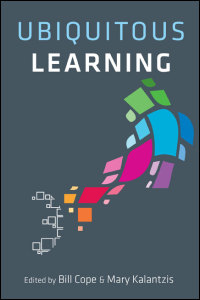Before I get into things here, I want to note this page: http://balancedtech.wikispaces.com/iPad+Exploration
LeftFoot/RightFoot - BalancEdTech has a collection of great ed tech articles, links, and workshop templates for educators. Keep up the good work!
 |
| http://images.mylot.com/userImages/images/postphotos/2269084.jpg |
Part of my work over at BCC involves managing a set of iPads (1 and 2) for faculty to "check-out" and investigate. The goal is to generate materials that strengthen the program that supports the technology. The program is basically about putting tools into faculty hands to help them sustain a culture of teaching and learning that enables students to be better engaged with their courses and the college. The assumption is that through course redesign with an injection of technology, student retention will improve.
This is no easy feat though! For instance, how a STEM instructor or a humanities instructor approaches and defines teaching and learning varies somewhat. More than that, many instructors at times don't want to embrace technology (in hardware like an iPad, or in a conceptual form like an outcomes model). This can be a challenge when emerging mobile devices are popping up in the classroom, or education system-level directives initiate outcomes assessment guidelines.
Theory and argument aside, what I am currently working with is an outcomes-based model that has ipads tied into it (rather loosely). The binding between technology and instruction is what I am expecting faculty to create, as opposed to my "instructional expertise" declaring, iPads will be used in this way for courses XYZ.
So far, the process is more about figuring out the technology through partnering with faculty. A model we have been trying is lending iPads to faculty so they may learn the technology and begin to experiment it in the classroom. So far, one issue I am observing has to do with the fact that Pads are not designed to be "borrow-able" devices. As Apple sales folks tell me, iPads are meant to be a 1:1 device. The technology just doesn't allow for lending in order for the device to work as intended. For instance, iCloud cannot be used when borrowers use the device since it is tied to the device's account. If they reset the account, signing in with their Apple ID, then we loose services such as 'Find My iPad'.
Nevertheless, if an institution wants to establish a mobile device culture, they need to get people to use a device without having to buy it. Here at BCC we are starting a mobile computing committee to in a way set standards for what we will support and strategize for. The Apple TV/iPad/iOS 5 remote model seems to work well, but to test it requires an investment of both money and time.
Here are a few things to think about during a mobile testing phase:
1. Institutions experimenting with iPads (or another mobile device) MUST loan them out first asr trial runs to establish surface level use. This gives users a chance to learn how to turn the device on and off, browse the internet, and explore some basic features.
2. Once a mobile device has become more common, then ask users to purchase their own (or set up a purchase program taking advantage of Apple's education discounts with 10-pack purchases.
3. Pilot both lesson-level and semester-long mobile pilot tests. This can help establish the mobile device as a teaching and learning tool through intentionally designed lesson plans. For instance, using an iPad class-set for just one lesson, or loaning them out to students for semester-long studies as eReaders.
Its not so simple as "here's your iPad...go to it." It reminds me of when desktops were thrusted upon educators and asked to figure out how to use it. The computers inevitablly ended up as dust collectors.
For now, its implementing the plans and seeing what data will reveal.




